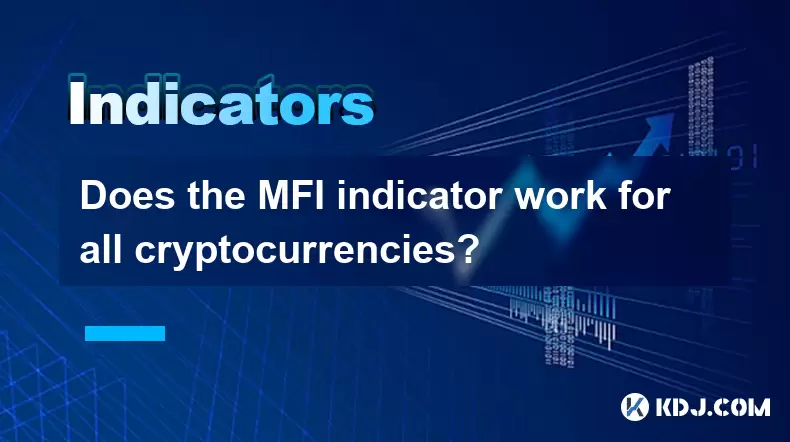-
 Bitcoin
Bitcoin $115100
-1.30% -
 Ethereum
Ethereum $4758
-1.70% -
 XRP
XRP $3.027
-2.19% -
 Tether USDt
Tether USDt $0.9998
-0.01% -
 BNB
BNB $883.2
-1.42% -
 Solana
Solana $204.0
2.62% -
 USDC
USDC $1.000
0.02% -
 Dogecoin
Dogecoin $0.2371
-0.97% -
 TRON
TRON $0.3612
-1.24% -
 Cardano
Cardano $0.9128
-2.19% -
 Chainlink
Chainlink $26.13
-3.93% -
 Hyperliquid
Hyperliquid $44.73
0.90% -
 Sui
Sui $3.715
-0.56% -
 Stellar
Stellar $0.4153
-2.41% -
 Ethena USDe
Ethena USDe $1.000
-0.04% -
 Bitcoin Cash
Bitcoin Cash $588.9
-2.06% -
 Avalanche
Avalanche $25.91
3.27% -
 Hedera
Hedera $0.2525
-1.45% -
 Litecoin
Litecoin $120.9
-1.35% -
 UNUS SED LEO
UNUS SED LEO $9.607
0.30% -
 Toncoin
Toncoin $3.382
-0.31% -
 Shiba Inu
Shiba Inu $0.00001329
-0.38% -
 Uniswap
Uniswap $11.38
-1.67% -
 Polkadot
Polkadot $4.222
2.83% -
 Aave
Aave $354.5
4.93% -
 Dai
Dai $0.0000
0.00% -
 Bitget Token
Bitget Token $4.704
-1.49% -
 Cronos
Cronos $0.1565
1.83% -
 Ethena
Ethena $0.7463
1.55% -
 Monero
Monero $265.8
-0.39%
Does the MFI indicator work for all cryptocurrencies?
The Money Flow Index (MFI) is a volume-weighted momentum oscillator that helps identify overbought (>70) or oversold (<30) conditions in cryptocurrencies, with greater reliability in high-volume assets like Bitcoin and Ethereum due to their consistent trading volume and liquidity.
Aug 06, 2025 at 05:49 am

Understanding the MFI Indicator in Cryptocurrency Trading
The Money Flow Index (MFI) is a momentum oscillator that measures the flow of money into and out of a cryptocurrency over a specified period, typically 14 days. It combines price and volume data to identify potential overbought or oversold conditions. The MFI ranges from 0 to 100, with readings above 70 generally indicating overbought conditions and readings below 30 suggesting oversold levels. This indicator is derived from the Relative Strength Index (RSI) but incorporates volume, which adds a layer of confirmation not present in RSI.
While the MFI is widely used across financial markets, its effectiveness in the cryptocurrency market depends on several factors, including the asset’s liquidity, trading volume, and market maturity. Cryptocurrencies like Bitcoin (BTC) and Ethereum (ETH) exhibit relatively stable volume patterns, making MFI signals more reliable. However, for smaller-cap altcoins with erratic volume and low liquidity, MFI readings may produce misleading signals due to sudden spikes or drops in trading activity.
How MFI Responds to Market Conditions in Crypto
The MFI is particularly sensitive to volume changes, which are common in the crypto space due to its 24/7 trading nature and susceptibility to news-driven volatility. For instance, when a major exchange announces support for a new token, volume can surge dramatically, causing the MFI to spike into overbought territory even if the price hasn’t moved significantly. In such cases, traders must interpret the MFI in context.
- Monitor volume consistency before acting on MFI signals
- Cross-verify MFI readings with price action and support/resistance levels
- Use MFI in conjunction with moving averages or Bollinger Bands for confirmation
For example, if the MFI reaches 80 on a low-volume altcoin, it may not indicate a true reversal point. Conversely, an MFI reading of 25 on Bitcoin during a sustained downtrend with increasing volume could signal strong selling pressure and a potential reversal if volume begins to decline.
Applying MFI to High-Volume vs. Low-Volume Cryptocurrencies
The reliability of the MFI varies significantly between high-volume and low-volume cryptocurrencies. On major exchanges, BTC/USDT or ETH/USDT pairs often have deep liquidity and consistent volume, making MFI calculations more accurate. The volume-weighted nature of MFI ensures that price movements accompanied by strong volume are given greater significance.
In contrast, low-cap cryptocurrencies traded on smaller exchanges may experience wash trading or volume manipulation, which distorts the MFI. Fake volume can create false signals, such as an MFI drop to 20 without a corresponding price reversal. Traders should avoid relying solely on MFI for such assets.
- Check the exchange credibility and volume authenticity before using MFI
- Prefer trading pairs with high 24-hour volume relative to market cap
- Use on-chain data or third-party volume analytics to verify volume legitimacy
Platforms like CoinGecko or Glassnode can help assess whether volume is organic or inflated, ensuring more trustworthy MFI interpretation.
Step-by-Step Guide to Setting Up MFI on a Crypto Chart
To use the MFI effectively, traders must configure it correctly on their trading platform. Most platforms, such as TradingView or Binance, offer built-in MFI tools.
- Open your preferred charting platform and select a cryptocurrency pair
- Click on the “Indicators” button and search for “Money Flow Index”
- Set the period to 14 (default), though some traders use 9 or 21 based on strategy
- Adjust the overbought level to 80 and oversold level to 20 if desired for stricter signals
- Apply the indicator and observe how it correlates with price movements
Once applied, watch for divergences between price and MFI. For example, if the price makes a new high but the MFI fails to exceed its previous high, this bearish divergence may signal weakening momentum.
Common Misinterpretations of MFI in Crypto Markets
One of the most frequent errors is treating MFI as a standalone reversal signal. In trending markets, MFI can remain in overbought or oversold territory for extended periods. For instance, during a strong bull run, Bitcoin’s MFI might stay above 70 for days without a correction, leading traders to prematurely short the asset.
Another issue is ignoring timeframe alignment. A 14-period MFI on a 5-minute chart behaves very differently from one on a daily chart. Short-term traders may see frequent crossovers of the 20/80 levels, while long-term investors use weekly MFI to spot macro divergences.
- Avoid entering trades based solely on MFI crossing 30 or 70
- Combine MFI with trendlines, volume profiles, or order book data
- Use higher timeframes to filter out noise from lower timeframe MFI fluctuations
Additionally, whale activity can distort MFI readings. A single large transaction can spike volume and skew the indicator, especially on less liquid tokens.
Optimizing MFI for Different Crypto Trading Strategies
Day traders often use MFI in range-bound markets to identify short-term entry and exit points. When the price consolidates between support and resistance, MFI oscillations between 30 and 70 can guide buy-low, sell-high decisions.
Swing traders benefit from MFI divergence detection. If Ethereum’s price climbs to a new peak but MFI forms a lower high, this bearish divergence might precede a pullback. Confirming this with a break of a trendline increases reliability.
- For scalping, pair MFI with VWAP and order flow analysis
- In trend-following strategies, use MFI to spot exhaustion, not reversals
- In ranging markets, trade MFI crossovers of 20 and 80 with tight stop-losses
Algorithmic traders may code MFI into bots with filters for volume thresholds and price volatility to reduce false signals.
Frequently Asked Questions
Can MFI be used on non-USDT trading pairs like BTC/ETH?
Yes, MFI can be applied to any cryptocurrency pair, including BTC/ETH. However, the base currency’s volatility may influence volume readings. Ensure the pair has sufficient trading activity to generate reliable MFI values.
What period setting is best for MFI in crypto?
The 14-period setting is standard and widely used. Traders seeking more sensitivity may use 9-period, while those preferring smoother signals might opt for 21-period. Backtesting on historical data helps determine the optimal setting for a specific asset.
Why does MFI give false signals on some altcoins?
False signals often stem from low trading volume, manipulated volume, or extreme volatility. Altcoins with thin order books can experience price swings unrelated to genuine market sentiment, causing MFI to misrepresent momentum.
Should I use MFI on spot trading or futures?
MFI works for both, but futures trading introduces leverage and funding rates, which can distort volume and price action. For futures, combine MFI with open interest analysis to improve accuracy.
Disclaimer:info@kdj.com
The information provided is not trading advice. kdj.com does not assume any responsibility for any investments made based on the information provided in this article. Cryptocurrencies are highly volatile and it is highly recommended that you invest with caution after thorough research!
If you believe that the content used on this website infringes your copyright, please contact us immediately (info@kdj.com) and we will delete it promptly.
- XYZVerse, Shiba Inu, and the 2025 Bull Cycle: A Meme Coin Evolution
- 2025-08-24 13:05:12
- WLFI Token, BingX, and the Trading Landscape: A New York Perspective
- 2025-08-24 12:45:20
- Aave, Governance, Allocation: Navigating DeFi's Shifting Sands
- 2025-08-24 12:45:20
- Crypto Coins in 2025: Meme Coins, Undervalued Blockchains, and Bull Run Predictions
- 2025-08-24 13:05:12
- Fed Pivot Ignites Crypto Rally: Altcoins Set to Outperform?
- 2025-08-24 13:25:12
- Eric Trump, Tokyo, and Metaplanet: A Bitcoin Bonanza?
- 2025-08-24 11:05:13
Related knowledge

What does it mean when the +DI and -DI cross frequently in the DMI indicator but the ADX is flattening?
Aug 11,2025 at 03:15am
Understanding the DMI Indicator ComponentsThe Directional Movement Index (DMI) is a technical analysis tool composed of three lines: the +DI (Positive...

What does the sudden appearance of a "dark cloud cover" candlestick pattern during an uptrend indicate?
Aug 13,2025 at 11:35am
Understanding the 'Dark Cloud Cover' Candlestick PatternThe dark cloud cover is a bearish reversal pattern in technical analysis that typically appear...

What does it mean when the moving average, MACD, and RSI all send buy signals simultaneously?
Aug 11,2025 at 01:42pm
Understanding the Convergence of Technical IndicatorsWhen the moving average, MACD, and RSI all generate buy signals at the same time, traders interpr...

What does it mean when both the KDJ indicator and the RSI show overbought signals simultaneously?
Aug 13,2025 at 11:35am
Understanding the KDJ Indicator in Cryptocurrency TradingThe KDJ indicator is a momentum oscillator derived from the Stochastic Oscillator, widely use...

What does it mean when the price is trading above the SAR indicator but the red dots are densely packed?
Aug 09,2025 at 11:49pm
Understanding the SAR Indicator and Its Visual SignalsThe SAR (Parabolic Stop and Reverse) indicator is a technical analysis tool used primarily to de...

What does it mean when the candlestick chart forms a "Morning Star" but trading volume is sluggish?
Aug 12,2025 at 06:28pm
Understanding the Morning Star Candlestick PatternThe Morning Star is a three-candle bullish reversal pattern commonly observed in cryptocurrency pric...

What does it mean when the +DI and -DI cross frequently in the DMI indicator but the ADX is flattening?
Aug 11,2025 at 03:15am
Understanding the DMI Indicator ComponentsThe Directional Movement Index (DMI) is a technical analysis tool composed of three lines: the +DI (Positive...

What does the sudden appearance of a "dark cloud cover" candlestick pattern during an uptrend indicate?
Aug 13,2025 at 11:35am
Understanding the 'Dark Cloud Cover' Candlestick PatternThe dark cloud cover is a bearish reversal pattern in technical analysis that typically appear...

What does it mean when the moving average, MACD, and RSI all send buy signals simultaneously?
Aug 11,2025 at 01:42pm
Understanding the Convergence of Technical IndicatorsWhen the moving average, MACD, and RSI all generate buy signals at the same time, traders interpr...

What does it mean when both the KDJ indicator and the RSI show overbought signals simultaneously?
Aug 13,2025 at 11:35am
Understanding the KDJ Indicator in Cryptocurrency TradingThe KDJ indicator is a momentum oscillator derived from the Stochastic Oscillator, widely use...

What does it mean when the price is trading above the SAR indicator but the red dots are densely packed?
Aug 09,2025 at 11:49pm
Understanding the SAR Indicator and Its Visual SignalsThe SAR (Parabolic Stop and Reverse) indicator is a technical analysis tool used primarily to de...

What does it mean when the candlestick chart forms a "Morning Star" but trading volume is sluggish?
Aug 12,2025 at 06:28pm
Understanding the Morning Star Candlestick PatternThe Morning Star is a three-candle bullish reversal pattern commonly observed in cryptocurrency pric...
See all articles

























































































